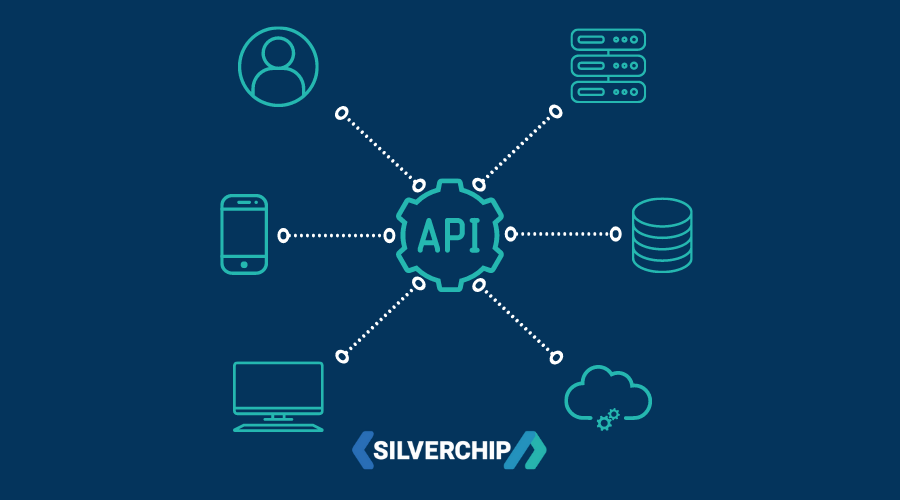
If you’re a non-technical person, it’s easy to get lost in the world of confusing tech terms, types of software, and what functions they all provide. You may have heard of API’s and API integrations, but never really understood them. In this article, we will explain what they are, how they work and why they are so important.
What is an API (Application Programming Interface)?
An API is a collection of definitions, protocols and instruments that interact and communicate with each other.
APIs are the reason that a user can cooperate with a web-based tool or application. API’s enable the user to interact with the interface and request data or specific actions from an app.
After the user has requested action, the application will transfer the data to an API, which will take the information provided and give a solution to the requested action. The returned data will be translated by the API into something the user can understand.
An example of an API in action, when you use an app such as the weather app or Twitter for example, the application connects to the internet and sends the relevant data to a server. The server then interprets the data and performs the necessary actions then relays that back to your mobile phone such as displaying the current temperature in your current location or Twitter displaying the trending topics in your selected area.
What is API Integration?
Now we understand what APIs are and how they work, let's dive into what an API integration is. To put it in simple terms, as computers can’t talk to each other, API integrations is the feature that allows computers to tell each other what to do. Or in tech terms, it’s the connection between two or more applications via their APIs that let systems exchange data sources.
API Integration is the most efficient way to automate tasks, it powers processes throughout many layers and sectors of the organisation to keep data coinciding, boost productivity and improve revenue.
APIs are important to any business, regardless of the size of the enterprise as APIs allow for seamless operations and performance of app and web systems. It improves information and service delivery versatility, as well as making it easier to embed content from numerous sites and applications. An API acts as the interface which allows two applications to be integrated.
Why do we need API integration and why are they necessary?
We need API integration as it eliminates the possibility of human error when it comes to sharing data and communications. It also saves time as it allows companies to automate systems and increase seamless sharing of data. In this modern world, API integration cannot be overlooked or have its importance disregarded.
Now that cloud-based products and apps have become popular, organisations require a connected system where data is transmitted automatically between several software tools. It’s now possible to share processes and enterprise data amongst the various applications thanks to API integrations. It creates a new level of service delivery and flexibility of information which also makes the embedding of content from different apps and sites easier.
Examples of API Integrations
An example of a recent API Integration project we created for KTN (Knowledge Transfer Network); we were tasked with supporting their research and innovation initiatives by developing its tools and services to connect organisations, control data quality, and promote cross-market business and trade.
To achieve this, we successfully developed a centralised API tender management tool to help businesses view live opportunities linked to their services. Working with several departments, we helped achieve a more connected, digitally efficient platform to help support SMEs win more business. The system works seamlessly with several other systems such as Companies House, Dotdigital, and Beauhurst.
Currently, there are a few methods of achieving API integration, but ultimately, they boil down to the specific needs of your organisation. Here are a few:
Connector Applications
This type of application is designed to feature APIs that make it simpler for two renowned tech platforms to merge. If they are to be used by different companies, they are mass-produced.
API Integration Management Platform
The purpose of these platforms tends to be devoted to the development of API integrations that help link other SaaS applications and systems with SaaS applications.
There are tools available on the market that can help you create custom integration apps; some allow you to obtain and convert data into a form that can be comprehended by your app with just a singular question.
Custom Integrations
This method is a little bit trickier than the others; it requires a software developer with experience in the APIs you want to integrate with handwritten scripts. This method used to be very popular, until newer and simpler integration methods were introduced.
The API Integration process is a very precise process that includes three vital parts, regardless of the integration tool you decide on.
First off, you need to define your priorities and all your company processes for instance. The pain points must be worked out and how the combination of two or more software systems will help to eliminate these issues. It's important that the team who help you decide how the integration will support your company are software engineers and system administrators.
Once you’ve done this, you can start planning the process when you have decided your goals and objectives. You can request a custom application to be built that will communicate with the defined software platform APIs to help you achieve your set goals by creating new features.
Lastly, it is imperative to conduct tests on your new system, so you know the integration app is up to the task and bug-free.
All in all, API integrations are a key part of the modern world, and most businesses will require some sort of API integrations for their business to run more efficiently and avoid human errors. They’re the glue in the tech departments for multiple applications and I’m sure we’ll continue to see them evolve as technology progresses in the future.
If you would like to speak with one of our expert teams about API Integrations and how they will benefit your business, please don’t hesitate to get in touch via our website.









